With the full spoiler for Shadows Over Innistrad finally available, we decided to change up our usual set analysis column for something new. Since Mark Rosewater recently introduced the world to the Storm Scale, we’re going to apply its principles to the mechanics of Shadows Over Innistrad and see how they project as options to appear in future sets.
The Storm Scale
A few weeks ago, Mark Rosewater introduced his regular readers to the Storm Scale. This is a grading scale, from 1 to 10, which Mark uses to assign a value to the likelihood of a specific mechanic returning in a Standard-legal expansion. The scale originated on Mark’s Tumblr, “Blogatog,” and is named after the least likely mechanic to return: Storm. The scale, as Mark described, is based on five key factors: Popularity, Design Space, Versatility, Development, and Playability. He then walked through each mechanic of Khans of Tarkir and assigned a storm value. Today, we’re going to look at all the mechanics of Shadows Over Innistrad and see if we can help Mark out a bit and predict the future Storm Scale value for each mechanic.
Shadows Over Innistrad Mechanics
Double-Faced Cards
I think it’s safe to say that if the production cost of double-faced card was not so high, this mechanic would be a 1 on the Storm Scale. Everyone loves the DFC mechanic. The popularity for these cards is off the charts. Furthermore, there’s a ton of design space available for double-faced cards. Previous set mechanics like Monstrous could have been executed as double-faced cards and they would have been gorgeous. Only the cost is holding it back. The versatility of DFCs is also fantastic as they can fit in any setting or environment. The same goes for the development and playability of the mechanic. Again, the DFC mechanic is clearly a 1 on the Storm Scale and I hope Wizards eventually figures out how to bring the cost down so we can get these kinds of cards in every expansion.
The DFCs from Shadows Over Innistrad look pretty sweet as well, which I’m sure will only add to their overall popularity. They are able to capture the dual-faced nature of Innistrad as a world (sane to insane, peaceful to horrible) while also creating interesting mechanics and game states. Cards like [casthaven]Hanweir Militia Captain[/casthaven] tell a story while cards like [casthaven]Heir of Falkenrath[/casthaven] can fuel a linear Vampire-Madness strategy. The flexibility here is superb.
Storm Scale: 1/10—Would return every set if it wasn’t for the production cost
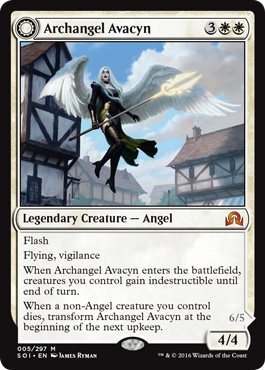
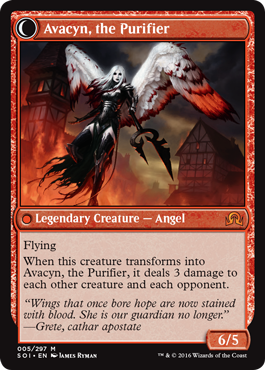
Madness
This is another popular mechanic and I don’t think Shadows Over Innistrad is going to do it any disservice. When it originally appeared in Odyssey block, Madness was a highly competitive mechanic, fueled by cards like [casthaven]Circular Logic[/casthaven] and [casthaven]Arrogant Wurm[/casthaven]. In its return in Time Spiral, it was more of a nostalgic throwback, but was still highly enjoyable. In SOI it serves as the main tribal mechanic for the Vampire clans in black and red’s slice of the pie (though it also appears in other colors). Flavorfully speaking, the Vampires of Innistrad have gone mad.
Unfortunately Madness has not been without its problems in the past. It was highly competitive because it was difficult to develop properly. Many of the cards from Odyssey block were too powerful and combined too well with other powerful cards like [casthaven]Aquamoeba[/casthaven], [casthaven]Wild Mongrel[/casthaven], and [casthaven]Psychatog[/casthaven]. For this reason it was easy to assume Madness was very high on the scale. However, if Wizards has learned their lessons here, they could have a highly versatile mechanic with a lot of design space. Even some of the playability concerns have been addressed with a new rules template for the mechanic.
So have the development issues been addressed? It’s hard to say. The Madness cards are still very powerful, there’s no doubt about it. [casthaven]Fiery Temper[/casthaven] returns, and some of the new cards like [casthaven]Gisa’s Bidding[/casthaven] and [casthaven]Alms of the Vein[/casthaven] provide a lot of value. What’s missing are the cheap, repeatable discard outlets. Many of SOI’s discard outlets cost mana, limiting how often you can use them, or they require a tap activation or explicitly say they can only be used once/turn. This may solve the development issue of Madness in Standard, but could it be a problem in Modern? Time will tell.
Storm Scale: 6/10—It looks like Wizards may have finally solved some of the developmental issues of an otherwise popular, versatile, and interesting mechanic. I’m hesitant to say we’ll see Madness again soon, but it might not take as long as 10+ years this time to see it return.
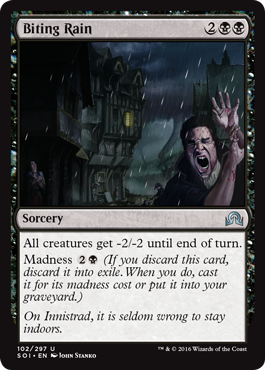
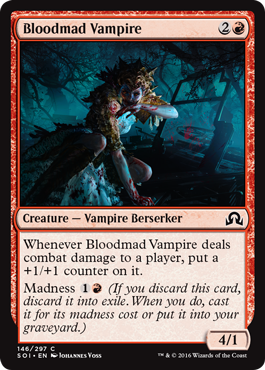
Delirium
It’s going to be just a little bit weird to spend the next few months asking each other, at a friendly game of Magic at your local shop, “Do you have delirium?” But here we are. This mechanic is a variation of Odyssey block’s Threshold mechanic, which simply required a player to have seven or more cards in their graveyard, a trivial task indeed. Now, things are a bit more complex (as many neurological disorders are) and players will need to have four or more different types among cards in their graveyard.
The cards featuring Delirium are interesting enough that the mechanic may be popular, but on the other hand the overhead of having to set up your graveyard may turn people off from picking these cards in limited. This is also another mechanic which requires discard outlets to thrive, which means Delirium drafters will have to compete with Madness drafters for those discard outlets. These issues could lead to Delirium being unpopular.
From a design perspective, Delirium has a lot of design space but not much versatility. This is mostly because of the naming convention. Similar to the Bushido and Ninjutsu mechanics, I think Delirium is going to suffer creatively. If the next graveyard-themed set does not involve mental disorders as a prevailing theme, then Delirium (and Madness) may not fit the flavor of the world. This may make it more challenging to design. From a design-space perspective, there is probably a large amount of space for this mechanic, because you can simply use it to supercharge your spells in a way similar to Spell Mastery or Domain. It rewards you for just playing Magic.
Storm Scale: 7/10—I don’t expect Delirium to be too popular with players, though it will be very popular with some. At the same time, I think creative challenges more than anything else will keep us from seeing Delirium again for a very long time (after this block is over, of course).
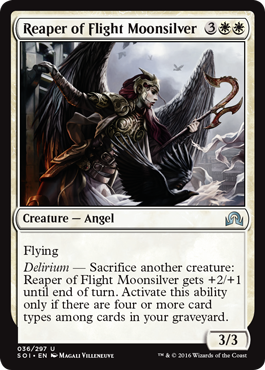
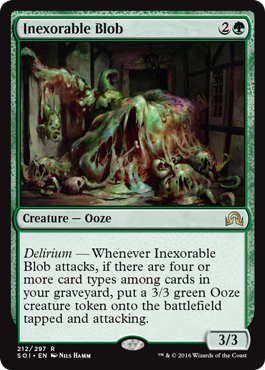
Investigate
I have a feeling that Investigate is going to be surprisingly fun to a lot of skeptical players. I expect Clue tokens to be littering the tables at limited events for many months to come as players get as much value as they can out of drawing extra cards. Also, Investigate will appear in many if not all limited archetypes. The question is, will it show up in constructed play, and to that I think the answer is going to be yes, but perhaps not until Dragons of Tarkir and Magic Origins rotate out of Standard.
Everyone loves card advantage, so that alone should make this a popular mechanic. From a design perspective, it’s clear that this mechanic is being pushed, so I would expect it to show up a lot. It has a lot of versatility as well, since it’s really just an expensive form of cantrips. However, it is actually much more than that, as demonstrated by cards like [casthaven]Confront the Unknown[/casthaven]. The Clue tokens themselves will also likely help make this mechanic and its surrounding fluff more playable.
Storm Scale: 4/10—The creative flavor may be the only limiting factor in seeing Investigate return to Standard in the near future. I’m sure we’ll get another mystery-flavored set eventually, and when we do you can bet Investigate will be there.
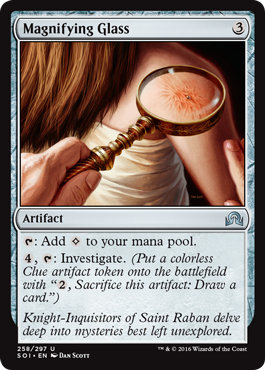
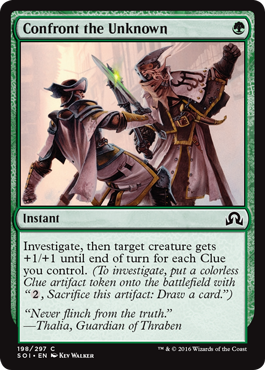
Skulk
Mechanics that prevent creatures from being blocked have had a difficult time in the past. Being unable to block a creature hasn’t really been a problem on its own, but when it is combined with other effects things can spiral out of control quickly. In Shadows Over Innistrad only a few of the Skulking creatures come with built-in advantages. Most of them will have to be built around. From a design perspective, Wizards is trying to fix one of the prevailing problems of unblockable creatures, which is the ability to make them bigger. Skulk actually turns that into a disadvantage. What won’t be fixed however is effects that trigger when your creatures deal combat damage to an opponent, such as with [casthaven]Ongoing Investigation[/casthaven], which lets you Investigate every time a creature you control deals combat damage to an opponent.
Storm Scale: 3/10—I expect Skulk to be a bit unpopular but it should play very well in limited and remain an interactive mechanic. Imagine using a pump spell on your opponent’s Skulk creatures so that you can block them. That will be a very rewarding exchange. Also the mechanic should work well in a variety of settings/environments. I would expect to see Skulk again in the near future, perhaps with very high frequency in fact.
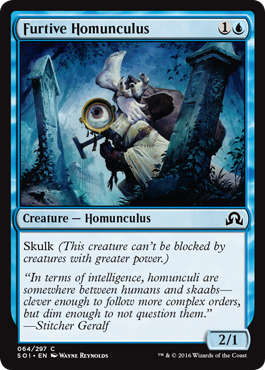
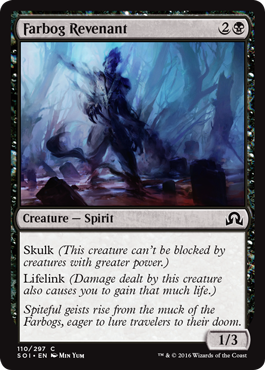
Tribal
There’s not a lot to say about this one. It was a key component of the original Innistrad block and it is back for Shadows Over Innistrad. Unfortunately we still don’t have a legendary Werewolf but it could be coming in the next set. We still have a lot of fantastic tribal components to go into plenty of casual decks across the spectrum and perhaps some competitive ones as well.
Storm Scale: 3/10—Tribal doesn’t appear in every set or even every block but it appears more often than not. I expect this will continue to be the case.
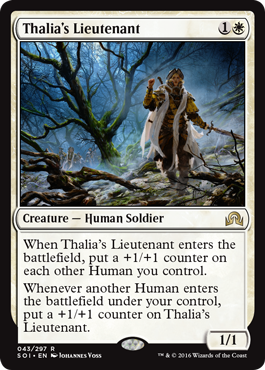
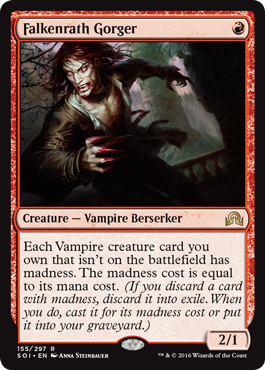
What We Learned is a weekly feature here at Hipsters of the Coast written by former amateur Magic Player Rich Stein, who came really close to making day two of a Grand Prix on several occasions. Each week we will take a look at the past seven days of major events, big news items, and community happenings so that you can keep up-to-date on all the latest and greatest Magic: the Gathering community news.

